(9827 products available)










































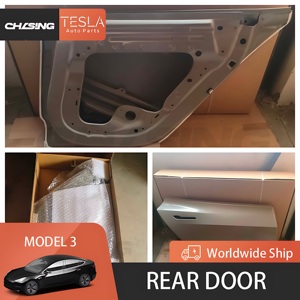
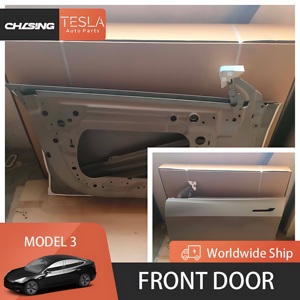

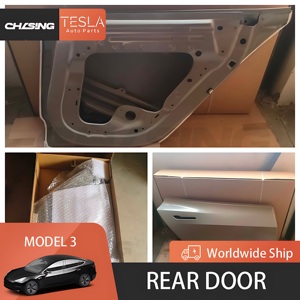
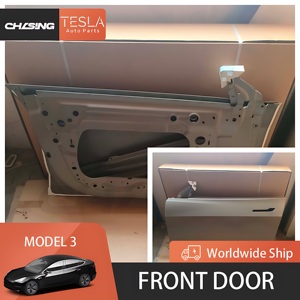













































































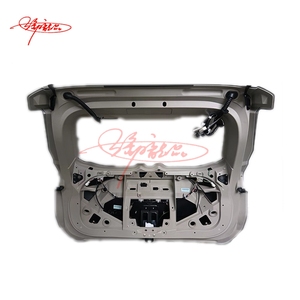








































































A lift gate is a platform fitted to the back of a truck or trailer. It can be raised and lowered to facilitate loading and unloading cargo. Lift gates are also known as tailgates or truck elevators. They come in various types designed to meet specific business needs. Below are some common types of lift gates:
Railgate
This is one of the most common types of lift gates, especially in the trucking industry. The lift gate is designed with two side rails that offer additional support when lifting cargo. Railgates come in various sizes and weight capacities. They can also be powered manually or electronically.
Wraparound Gate
A wraparound lift gate is designed with a fully enclosed platform. The lift gate is surrounded by walls on all sides, providing maximum protection for the cargo being lifted. Wraparound lift gates are ideal for transporting sensitive or fragile cargo. The fully enclosed design ensures that the cargo remains safe and secure during the lifting process.
Scissor Lift Gate
This type of lift gate features scissors-like mechanisms. When the lift gate is raised, the platforms and side rails fold inwards like scissors. Scissor lift gates are ideal for tight spaces or small loading docks. The unique design of the lift gate allows it to take up less space when raised.
Folding Gate
A folding lift gate is designed with multiple panels that fold together like a concertina. The panels on the lift gate fold inwards to minimize space when the gate is closed. Folding lift gates are ideal for applications where space is limited, such as urban environments or small delivery trucks.
Column Lift Gate
This type of lift gate is designed with vertical columns that support the platform. The columns provide additional strength and stability, making them suitable for lifting heavy or oversized cargo. Column lift gates are often used in freight transportation, where heavy machinery or large equipment needs to be loaded and unloaded.
Powerlix Gate
A Powerlix lift gate is a hydraulic lift gate that uses electric power to operate. The gate is equipped with hydraulic pumps and motors that lift and lower the platform. Powerlix lift gates are ideal for lifting heavy cargo, as they provide precise control and smooth operation.
Tailgate Lift
A tailgate lift is a specialized lift gate designed to be installed on the back of a truck or SUV. These lift gates are commonly used for commercial vehicles or trucks that transport goods. Tailgate lifts can be either hydraulic or manual, depending on the specific model and requirements.
Platform Lift Gate
A platform lift gate is designed with a flat platform where cargo can be loaded and unloaded. The platform is typically equipped with safety features such as guardrails or non-slip surfaces to ensure safe operation. Platform lift gates are commonly used in various industries, including logistics, warehousing, and manufacturing.
Here are specifications one should know about truck lift gate:
Capacity
Lift gate capacity refers to the maximum weight the lift gate can safely handle. It's fundamental to consider both the freight being transported and the lift gate's rating while loading to avoid overexerting the equipment.
Size
The dimensions of a lift gate, particularly the platform size, are crucial to its operation. A wider platform allows for the transportation of more oversized items, even though it may restrict the available space at the back of the vehicle. The opening size is also essential for fitting freight through.
Height
The height to which a lift gate can raise freight is essential, especially when unloading in areas with limited overhead space. Some lift gates may have adjustable height settings for more extraordinary loading situations.
Travel Speed
Travel speed refers to how fast a lift gate can be raised or lowered. Quicker travel speeds can boost efficiency, mainly when dealing with frequent loading and unloading. Nevertheless, safety should always come first, even at the cost of a little slower speed.
Power Source
Lift gates are typically hydraulically powered and often use the truck's battery or an external power source. Hydraulic lift gates are the most common and well-known lift gates. Battery-powered lift gates are more practical for smaller trucks or occasional use.
Construction
The materials and design of a lift gate influence its durability and maintenance requirements. Common materials include steel for strength and aluminum for corrosion resistance and lighter weight.
Safety Features
Lift gates incorporate various safety features to protect users and freight. These include emergency stop buttons, safety barriers, and overload protection systems. Safety should always be prioritized, and it's essential to familiarize oneself with a lift gate's safety features and proper operation procedures.
It's crucial to adhere to proper maintenance practices to ensure lift gates' safety, reliability, and longevity. Here are some general maintenance tips:
Inspection
A thorough inspection should be conducted before and after use. Users should inspect the lift gate for signs of wear, damage, or malfunction. Special attention should be given to the hydraulic system, hinges, and safety features.
Cleaning
The lift gate should be regularly cleaned to prevent dirt, debris, and corrosion, particularly in the hydraulic system and moving parts. Use mild detergent and water to avoid damaging the lift gate's components.
Lubrication
The lift gate's moving parts should be routinely lubricated with the recommended lubricant to ensure smooth operation and reduce the risk of wear and tear. Adhere to the manufacturer's guidelines regarding the appropriate lubricant type and frequency of lubrication.
Hydraulic System Maintenance
The hydraulic system's fluid level should be regularly checked, and any leaks or damage should be promptly addressed. The hydraulic system's filters and hoses should also be periodically inspected and replaced as necessary to ensure optimal performance.
Load Capacity Compliance
It's imperative to avoid exceeding the lift gate's load capacity. Overloading can lead to severe damage and pose safety risks. Distribute the load evenly across the platform to maintain lift gate stability and proper operation.
Training and Safety Awareness
Ensure all lift gate users receive proper training in its operation and safety protocols. Familiarize oneself with the lift gate's features, emergency procedures, and necessary personal protective equipment (PPE) to ensure a safe working environment.
By adhering to these maintenance tips and prioritizing safety, lift gate users can ensure efficient and reliable performance, extending the equipment's lifespan and reducing accidents and injuries.
Before ordering a lift gate, it is important to select the right one for the intended use. Here are some factors to consider when choosing a lift gate:
Weight Capacity
When selecting a lift gate, understanding the maximum weight capacity it can handle is vital. This is because the user will be able to determine the safe and efficient lifting of heavy cargo without exceeding the limits of the lift gate. Choosing a lift gate with adequate weight capacity also helps to prevent potential injuries and accidents that may occur from overloading.
Size and Dimensions
Lift gates have different sizes and dimensions. Therefore, it is important to consider the height and width of the lift gate before loading cargo. This is important because it helps to select a lift gate that can accommodate the transportation of large or oversized freight without restrictions.
Type of Lift Gate
There are different types of lift gates that are designed for different functions and purposes. For example, some are more suitable for loading and unloading heavy freight in busy dock environments, while others are ideal for curbside delivery. It is important to choose a lift gate that is suitable for the specific environment and application area.
Security Features
When choosing a lift gate, security features such as safety straps, emergency stop buttons, and side fences should be considered. These features help to prevent accidents and injury during the process of loading and unloading freight.
Ease of Operation
Lift gates come with different options that have varying levels of ease of operation. Some gates are equipped with manual operation systems, while others have hydraulic or electric systems. It is important to choose a lift gate that can be operated easily and conveniently, especially in situations where frequent loading and unloading is required.
Durability and Construction
Before choosing a lift gate, factors such as the construction material and the design of the lift gate should be considered. This is important because it helps to select a lift gate that is strong and durable for various applications and functions. Additionally, environmental factors such as exposure to moisture or extreme weather conditions should also be considered.
Maintenance Requirements
Before choosing a lift gate, the maintenance requirements of the lift gate should be considered. This is because different lift gates require different maintenance levels, such as regular lubrication or inspection. Therefore, it is important to choose a lift gate that the users can maintain easily and conveniently, thus preventing potential problems.
The process of replacing a lift gate can be complicated. It’s a job that requires attention and expertise. Here is a detailed guide on how to replace a lift gate manually.
Tools Needed:
Step by Step Guide
Q1: How is a lift gate different from a tailgate?
A1: A lift gate is an elevator attached to the back of a truck or vehicle. Users can open and close it like a door. They can also use it to load and unload cargo. On the other hand, a tailgate is a gate found at the back of a pick-up truck. It is part of the vehicle's body and doesn't have a lift mechanism like the lift gate.
Q2: What are the different types of lift gates?
A2: There are more than three types of lift gates. They include the hydraulic lift gate, rail lift gate, lift and slide gate, bi-parting lift gate, and vertical hydraulic life gate. All these types of lift gates have different designs suitable for specific applications. For example, the hydraulic lift gate is suitable for heavy cargo loading and unloading, while the rail lift gate is designed for residential and commercial use.
Q3: Can one customize a lift gate?
A3: Yes, it is possible to customize a lift gate. Manufacturers can modify the design, size, and material to meet specific requirements. For example, they can create a larger lift gate to accommodate big cargo. It is important to consult the manufacturer or a professional carpenter when planning to customize a lift gate.
Q4: Can an electric lift gate be converted to a manual lift gate?
A4: Yes, an electric lift gate can be converted to a manual lift gate. This is important, especially when the owner is facing battery problems. Consult a professional technician to disconnect the electric system from the lift gate and convert it into a manual mechanism.
Q5: Can someone install a lift gate on any vehicle?
A5: No, not all vehicles can accommodate lift gates. Ideally, lift gates are designed for trucks and large vehicles used for cargo transportation. Consult the lift gate manufacturer to find out which vehicles are suitable for lift gate installation.